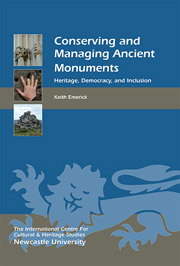Book contents
- Frontmatter
- Contents
- List of Illustrations
- Acknowledgments
- List of Abbreviations
- Introduction
- 1 The Restoration of Hellifield Peel and the Heritage Debate
- 2 The Origins of the Conservation of Ancient Monuments and the Beginnings of State Control in the United Kingdom
- 3 Practice Perfected: the Ancient Monuments Act of 1913 and the Consolidation of State Preservation Practice
- 4 British Conservation Practice in Cyprus, 1878 to 1939: a Case Study
- 5 Current Directions in England: the Emergence of Cultural Heritage Management and the Use of Conventions, Charters and Principles
- 6 Putting Theory into Practice
- 7 Conclusion: Ending the Tyranny of Ruskin and Morris?
- Appendices
- Bibliography and References
- Index
7 - Conclusion: Ending the Tyranny of Ruskin and Morris?
Published online by Cambridge University Press: 05 August 2014
- Frontmatter
- Contents
- List of Illustrations
- Acknowledgments
- List of Abbreviations
- Introduction
- 1 The Restoration of Hellifield Peel and the Heritage Debate
- 2 The Origins of the Conservation of Ancient Monuments and the Beginnings of State Control in the United Kingdom
- 3 Practice Perfected: the Ancient Monuments Act of 1913 and the Consolidation of State Preservation Practice
- 4 British Conservation Practice in Cyprus, 1878 to 1939: a Case Study
- 5 Current Directions in England: the Emergence of Cultural Heritage Management and the Use of Conventions, Charters and Principles
- 6 Putting Theory into Practice
- 7 Conclusion: Ending the Tyranny of Ruskin and Morris?
- Appendices
- Bibliography and References
- Index
Summary
Walter George Bell, the author of London Rediscoveries, noticed how in the early 1920s Post Office workmen were laying earthenware conduits for their telephone cables within a trough created by the wall of a Roman villa lying in Gracechurch Street, so that, he said, ‘our messages go whispering’ through rooms where once the citizens of a lost London spoke in an alien tongue.
(Ackroyd 2000, 562)Chapter 1 began with the case study of Hellifield Peel. Since the completion of that conservation project several others have taken place, or are in progress, such as at Astley Castle, Warwickshire, a project awarded the RIBA Stirling Prize for Architecture in 2013. On close examination it is possible to state that, for a great many years, there has been a creative or adaptive response to ruins. We have seen in Chapter 2 (pp. 30–1) that some historic ruins were adaptively reused, became ruins again, or were retained as dwellings. Some, such as Martello Towers, easily lent themselves to reuse. But in general terms those stories are not immediately apparent and do not always make their way into the public or academic arena. For some professionals, ‘restoration’ and ‘reconstruction’ are still problematic terms (and practices) which lead to an assumption that this element of conservation practice is best reserved for the conservation specialist rather than the public. Similarly there is a sense that ‘restoration’, as a word and set of practices, does not actually capture the nature of the changes that can happen at a place – as was seen in Chapter 6 with the example of Hellifield (p. 190). Perhaps it is necessary to think about using a new word.
- Type
- Chapter
- Information
- Conserving and Managing Ancient MonumentsHeritage, Democracy, and Inclusion, pp. 219 - 238Publisher: Boydell & BrewerPrint publication year: 2014



